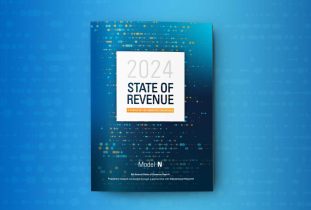Sales through tenders account for a growing proportion of revenues for life sciences companies. In emerging markets, they represent significant growth opportunities, whereas in more mature ones – especially in Europe – hospital systems and payers increasingly seek to curtail the rising costs of medicine and medical devices.
The money is big. The global pharmaceuticals market is predicted to expand from $1.5 trillion in 2021 to reach $2.1 trillion in 2026 at a compound annual growth rate (CAGR) of 7.7%, whereas the global medical devices market is projected to grow from $495 billion in 2022 to $719 billion by 2029 at a CAGR of 5.5%.
Today, a full 85% of revenue in the European medtech market flows in through tenders. And according to some estimates, 40% of pharma revenue in Europe is also through tendering. What’s more, in some markets, if you don’t proactively manage tenders, you could be effectively locked out of the “action” for one to almost three years.
You need a tender-management system to monitor, track, and manage upcoming and ongoing tenders across markets to boost both sales and margins in the current, highly competitive pharmaceutical and medtech markets.
In this blog, we look at the challenges life sciences companies face competing in markets and countries that are increasingly dependent upon tenders for procurement. We lay out the benefits of an automated solution or managing tenders. And we tell you what to look for in a tender management solution that will ensure you’re not missing out on growth opportunities.
The challenges of tender marketplaces
All too often, life sciences firms still depend on manual processes and disconnected spreadsheets to manage tenders. This results in missed opportunities, inaccurate projections, and failure to craft competitive tender offers.
Identifying relevant tenders across multiple geographies, tender marketplaces, and portals
Many countries run official websites where government agencies post tender notices for various goods and services related to the life sciences industry. Industry associations regularly share information about tender opportunities with their members. There are also numerous online marketplaces that specialize in connecting life sciences companies with procurement opportunities. Finally, there are the healthcare providers and payers themselves, which can quietly post or announce tender opportunities.
Life sciences companies that are that aren’t vigilant can miss out on huge opportunities. Often, by the time a tender is formally announced, it is too late to begin compiling a bid. Identifying and tracking these scattered opportunities can quickly turn into a full-time job that will still be very difficult to do without proper tools.
Meeting complex regulations and compliance requirements
The life sciences industry is heavily regulated. Understanding and complying with the various rules and standards required for tenders can be quite a conundrum. Even when the companies understand the rules, assembling the data and competitive information required for a response is difficult to do manually. And failure to comply with requirements can result in disqualification, penalties, or both. Life science companies also need to be able to collect and organize all required documents and information for each tender – such as real-world evidence, safety certificates, and licenses – tailored to fit local market requirements.
Failing to support collaboration between decentralized teams across functions
Missing cross-functional communication within companies making tender offers can jumble up tendering plans before they even begin. It is virtually impossible for one person within an organization to pull off winning a tender by themselves. Manufacturing must confirm capacity and cost. Finance, pricing, and market access are needed to approve the right price points. Go-to-market and medical teams are required to provide backup documentation. Without centralized tools for tender planning, management, and tracking that are used methodically across both brands and geographies, companies will not be able to work around the various organizational silos.
Shrinking margins
To avoid tender bidding becoming a race to the bottom, life sciences organizations need to bolster margins by shaping bids with criteria based on pre-simulated most economically advantageous tender (MEAT) and competitive data. Without capturing competitive information for analysis when either winning or losing, such firms cannot hope to improve future submissions – and margins. Life sciences firms need to build databases of competitive insights to help them apply learnings to future tenders.
Tender management solution must-haves
Certain capabilities are non-negotiable when it comes to deploying a tender management solution.
Enabling automatic tender marketplace searches: Life sciences companies need a centralized, automated way to search various public marketplaces for new bid publications and convert them into tender opportunities.
Possessing a global reach: Teams need to be able to configure the platform to match their local processes while retaining global visibility into all tendering aspects.
Streamlining workflows with templates and tasks: Streamline preparation and approval processes by providing clear workflows, assigning tasks, centralizing information, and tracking progress.
Offering “smart” approvals: Reduce unnecessary steps when new tenders reuse data from existing ones by putting only new data into the approval feedback loop.
Simulating scoring and weight pricing: Arrive at the most profitable offer by shaping bids using criteria based on the most economically advantageous tender (MEAT) and competitive data.
Performing real-time tracking and analysis: Track tenders as they progress to contract. Capture and analyze information to improve future submissions or properly fulfill the awarded tender.
Benefits of a tender-management solution
The right tender management solution will deliver the following benefits:
- Find and aggregate tender opportunities: Leading tender-management solutions can locate tenders of potential interest to a firm across multiple decentralized marketplaces and portals on a global scale.
- Improve bid preparation: A system helps firms organize their bid responses and ensure that all necessary information is included, improving the chances of winning the bid.
- Enhance bid accuracy and consistency: A digital system can help firms ensure that all bids follow the same format and include the same information, reducing errors and improving bid quality.
- Streamline bid submissions: A system can automate the process of submitting bids with workflows that keep things moving, reducing the risk of errors and ensuring that bids are submitted on time.
- Deliver real-time key performance indicators (KPIs): Real-time tracking and analyses of bids under consideration enable life sciences firms to see how their bids are performing and to improve them over time.
- Improve cross-functional collaboration and communication: A tender-management system can facilitate communication and collaboration between different departments and stakeholders involved in the bid process, improving the chances of winning.
How Model N can help
The goal of life sciences tendering teams is to optimize 100% of global opportunities. A 360-degree visibility into tender markets that allow them to proactively create winning strategies requires centralizing both internal and external information while providing clear workflows and approval processes to manage tenders from inception to completion.
Model N’s Global Tender Management (GTM) solution is designed to help manufacturers maximize revenues by optimizing bids and streamlining processes, aligning local and global resources in the tender process, and driving organizations toward realizing the benefits of a data-based approach to tendering.
















